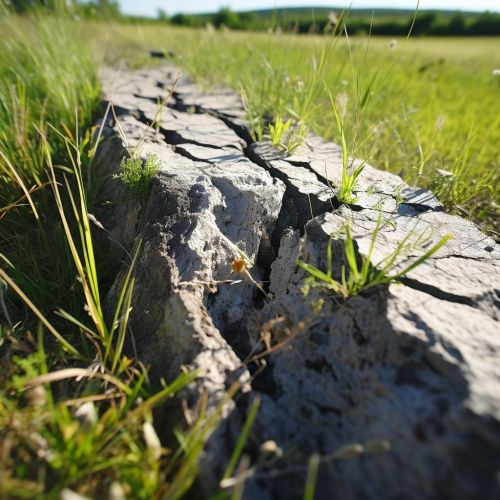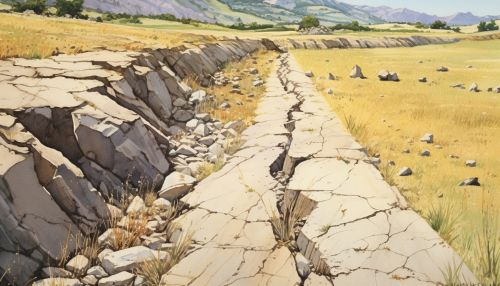Aseismic creep
Introduction
Aseismic creep, also referred to as fault creep, is a geological phenomenon that involves the slow, steady displacement along a geological fault in the absence of notable earthquakes. This process is a significant aspect of the study of seismology, as it provides insights into the behavior of faults and the mechanisms that drive seismic activity.
Understanding Aseismic Creep
Aseismic creep is a form of tectonic movement that occurs along a fault line. Unlike seismic activity, which is characterized by sudden, violent shifts in the Earth's crust leading to earthquakes, aseismic creep is a slow, gradual process. It is a form of strain release that occurs over extended periods, ranging from months to years, and even centuries.


Causes of Aseismic Creep
The primary cause of aseismic creep is the continuous movement of tectonic plates. The Earth's crust is divided into several large and small tectonic plates that are constantly in motion. When these plates interact at their boundaries, they can cause various geological phenomena, including earthquakes, volcanic activity, and aseismic creep.
Types of Aseismic Creep
There are two primary types of aseismic creep: continuous and episodic. Continuous creep is a constant, slow movement along a fault, while episodic creep, also known as slow slip events, involves periods of accelerated movement interspersed with periods of relative inactivity.
Measurement and Detection
Aseismic creep can be difficult to detect due to its slow nature. However, modern technology such as GPS and InSAR have made it possible to measure even the slightest movements along a fault line. These tools can provide valuable data for researchers studying the behavior of faults and the potential for seismic activity.
Impact of Aseismic Creep
While aseismic creep does not result in earthquakes, it can still have significant effects on the environment and human-made structures. Over time, the slow movement of the ground can cause damage to buildings, roads, and other infrastructure. However, it also plays a crucial role in relieving tectonic stress, potentially preventing larger, more destructive earthquakes.
Aseismic Creep and Earthquake Prediction
Understanding aseismic creep is essential for predicting earthquakes. While the process itself does not cause earthquakes, it can provide valuable information about the behavior of faults and the accumulation of strain. This data can be used to estimate the likelihood of future seismic events and inform mitigation strategies.
